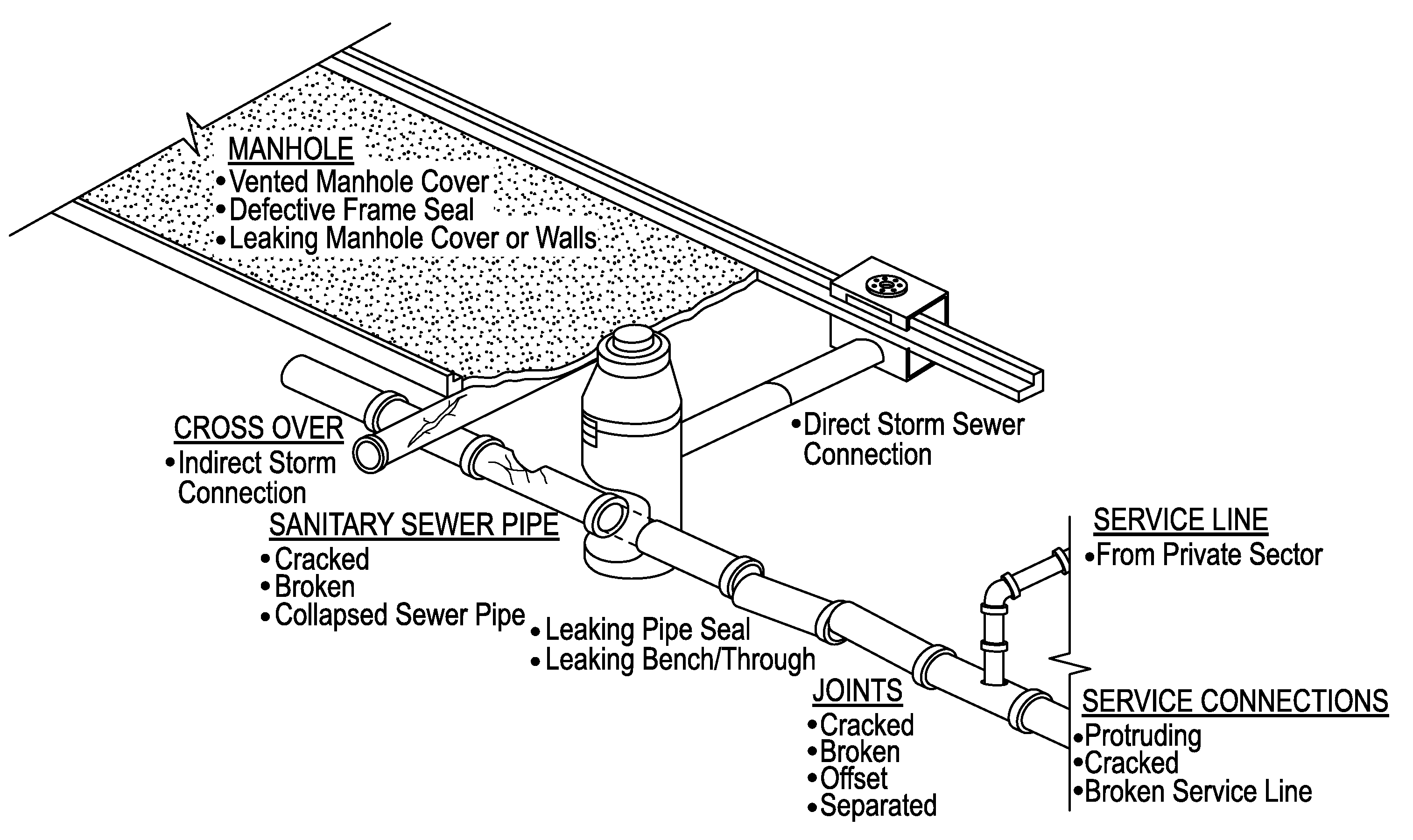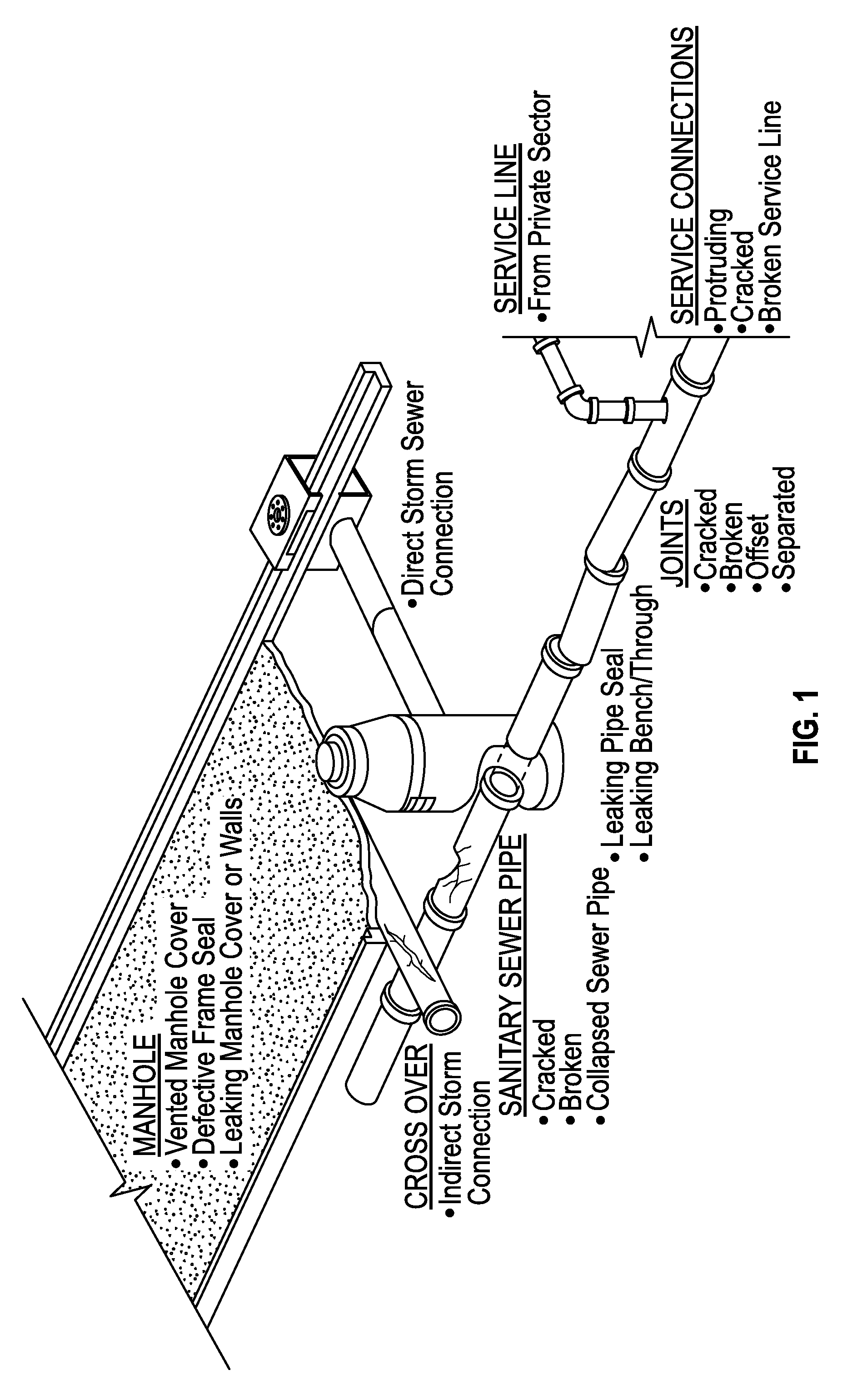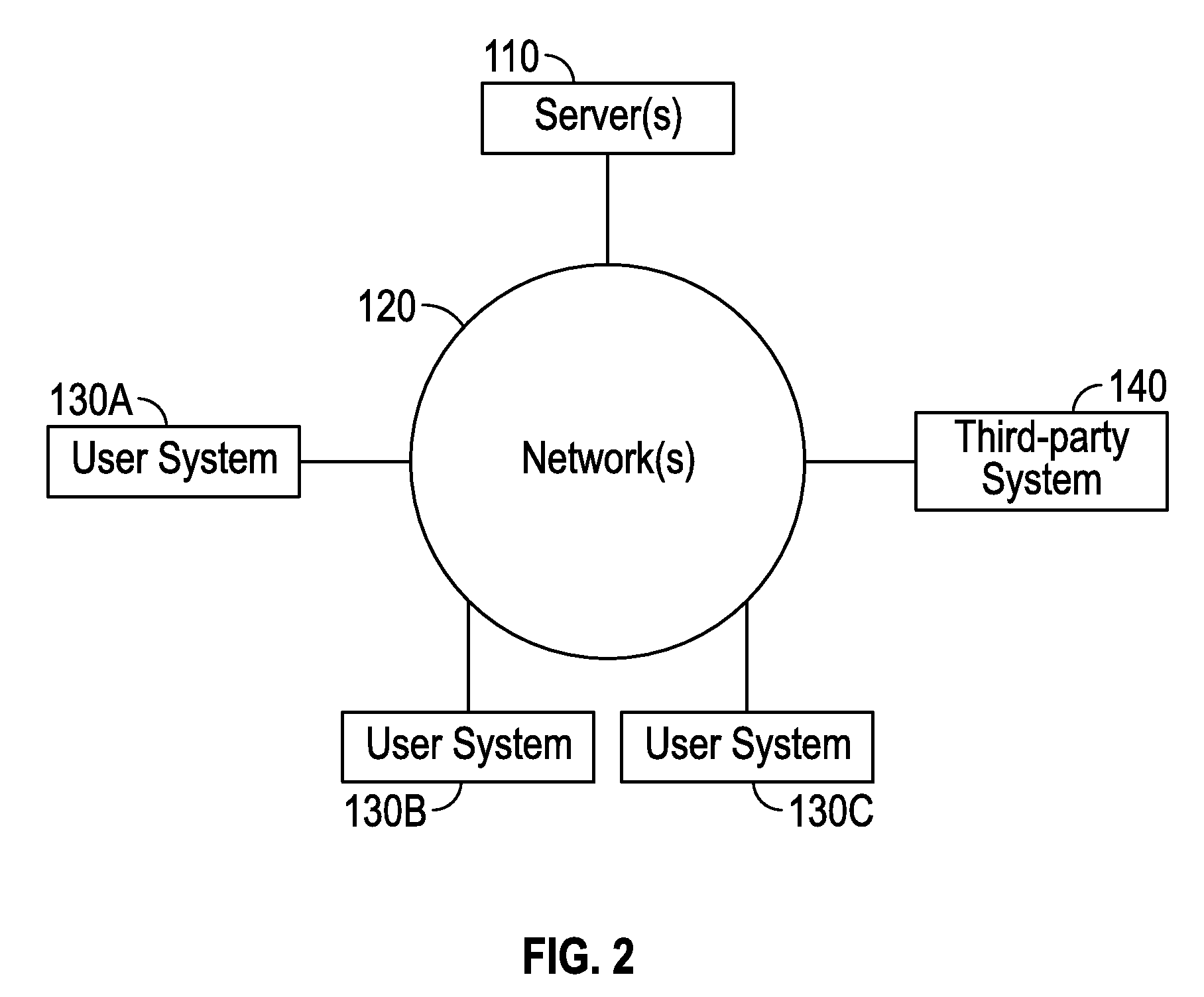Systems and methods for advanced sanitary sewer infrastructure management
a technology infrastructure management, applied in the field of advanced sanitary sewer infrastructure management, can solve the problems of aging of the infrastructure itself, damage to manholes, cracking of pipes or joints between pipes, etc., and achieve the effect of saving significant time and efficient automation of workflows
- Summary
- Abstract
- Description
- Claims
- Application Information
AI Technical Summary
Benefits of technology
Problems solved by technology
Method used
Image
Examples
example security
[0154 Model
[0155]As mentioned above, server platform 110 may provide security for restricting access to certain data, modules, and / or functions. In an embodiment, server platform 110 implements three security tiers: access control, authorization, and permissions. A user is given access to platform 110, and is authorized to see certain data and use certain modules, and has one or more permissions to use certain functions. Server platform 110 may employ a central repository for user account information which is managed from an administration application. A central authentication system (CAS) server uses the central repository to authenticate users centrally to all the application environments supported by server platform 110.
[0156]When a user attempts to log in to an environment, the application negotiates a login with the CAS server and grants access to the user to one or more of the environments. During the authentication process, the application may also derive or retrieve other in...
example processing
[0173 Device
[0174]FIG. 16 is a block diagram illustrating an example wired or wireless system 550 that may be used in connection with various embodiments described herein. For example, system 550 may be used as or in conjunction with one or more of the mechanisms or processes described above, and may represent components of server platform 110, user system(s) 130, third-party system 140, data sources 142, 144, 146, 148, and / or other devices described herein. The system 550 can be a server or any conventional personal computer, or any other processor-enabled device that is capable of wired or wireless data communication. Other computer systems and / or architectures may be also used, as will be clear to those skilled in the art.
[0175]The system 550 preferably includes one or more processors, such as processor 560. Additional processors may be provided, such as an auxiliary processor to manage input / output, an auxiliary processor to perform floating point mathematical operations, a spec...
PUM
 Login to View More
Login to View More Abstract
Description
Claims
Application Information
 Login to View More
Login to View More - R&D
- Intellectual Property
- Life Sciences
- Materials
- Tech Scout
- Unparalleled Data Quality
- Higher Quality Content
- 60% Fewer Hallucinations
Browse by: Latest US Patents, China's latest patents, Technical Efficacy Thesaurus, Application Domain, Technology Topic, Popular Technical Reports.
© 2025 PatSnap. All rights reserved.Legal|Privacy policy|Modern Slavery Act Transparency Statement|Sitemap|About US| Contact US: help@patsnap.com



